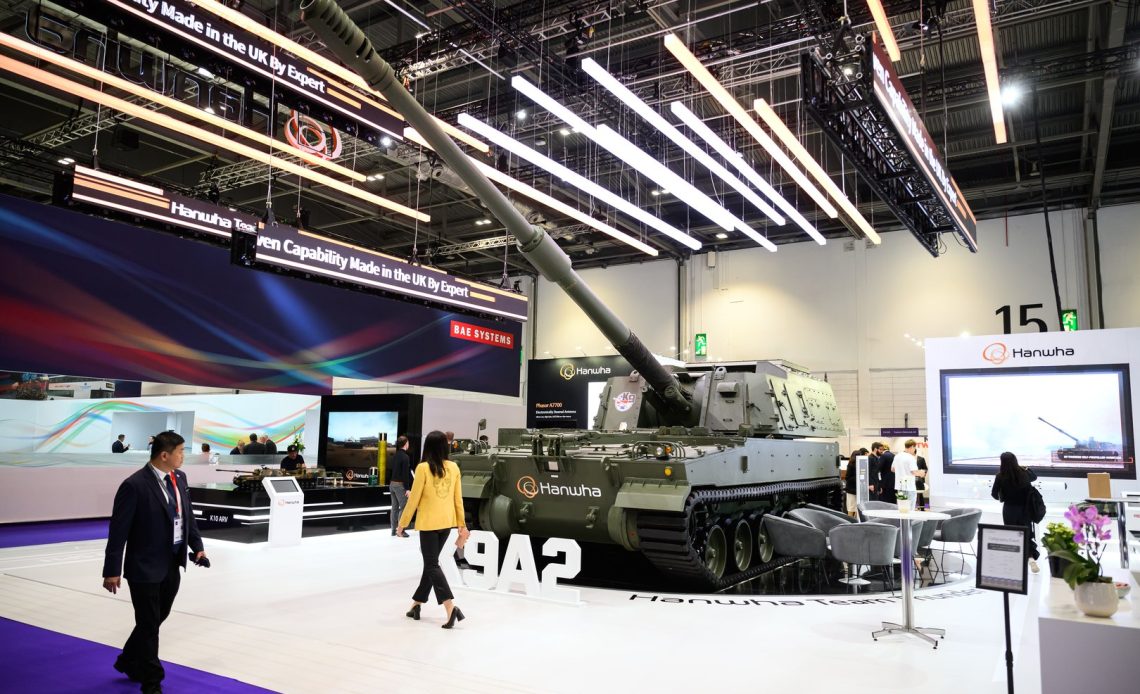
MILAN — Despite increased investments in homegrown weapons and systems, European nations are still facing major gaps in intelligence gathering, space access, long-range strike and missile defense, leaving governments here heavily reliant on the United States, according to a recent report.
The findings by a London-based think tank come ahead of one of Europe’s largest defense exhibitions, DSEI, hosted in the British capital Sept. 9–12. The trade show is expected to see an uptick in European participation this year, with more countries and companies represented —specifically from nations such as Lithuania and the Czech Republic.
Still, the U.S. government and arms industry are set to have a significant footprint, with only five of the 11 international pavilions listed on the DSEI website coming from European states.
In 2024, Europe raised its defense spending by nearly 50% in comparison to 2014 levels. Yet pervasive readiness gaps remain, according to the latest dossier published last week by the International Institute for Strategic Studies (IISS).
The document, which assessed current progress and shortfalls in European defense, listed capability deficiencies across several critical domains.
The first involves a lack of sufficient intelligence, surveillance and reconnaissance aircraft as well as geospatial capabilities among NATO European countries. IISS estimates that it may cost Europeans up to $4.8 billion to replace the eight signals- and electronic-intelligence platforms that Washington currently allocates for NATO contingencies.
While some European countries are starting to buy ISR aircraft and slowly develop national satellite constellations, American-made systems remain the core of NATO’s capability in this area. For instance, according to IISS data, the U.S. operates at least 80 crewed ISR aircraft and 34 signals-intelligence planes, compared to 36 and 11 in Europe, respectively.
A similar gap also exists in medium-altitude, long-endurance UAVs used for intelligence operations.
The report identifies space capabilities as another key shortfall, noting Europe’s limited launch capacity and reliance on France’s Ariane and Vega systems, despite efforts by countries like Germany, Italy and the Netherlands to expand their space architectures.
“Currently, it largely depends on the U.S. for access to space – SpaceX’s Falcon 9 [launcher rocket] has conducted more launches in the first half of 2025 than the combined European Arianne and Vega launcher families since 2015,” it says.
Another important vulnerability concerns long-range strike capability. With few exceptions —primarily France and the UK — European forces lack sufficient land- and sea-based missiles that can reach targets at ranges over 1,000 kilometers, limiting their ability to sustain high-intensity warfare.
The report also points to a growing trend regarding ground-based air- and missile-defense, for which the European defense market has been found to increasingly lean on non-NATO suppliers – notably Brazil, Israel, and South Korea.
Driven largely by the need to meet Europe’s urgent military modernization, defense export contracts from these three countries were found to have increased by almost 1,000% from 2018-2021 ($2.48 billion) to 2022-2025 ($27.11 billion).
IISS analysts further highlight that Europe’s integrated air and missile defense is still underdeveloped. The continent urgently lacks sufficient layered air defense across short, medium, and long ranges, where even operational systems are not accessible in the required quantities.
“European terminal-phase missile defense capabilities rely mainly on the U.S., either through U.S.-made systems operated by national militaries or American deployments to Europe — principally the Patriot,” the report said.
Author: Elisabeth Gosselin-Malo
Source: DefenseNews
Reviewed By: Editorial Team



